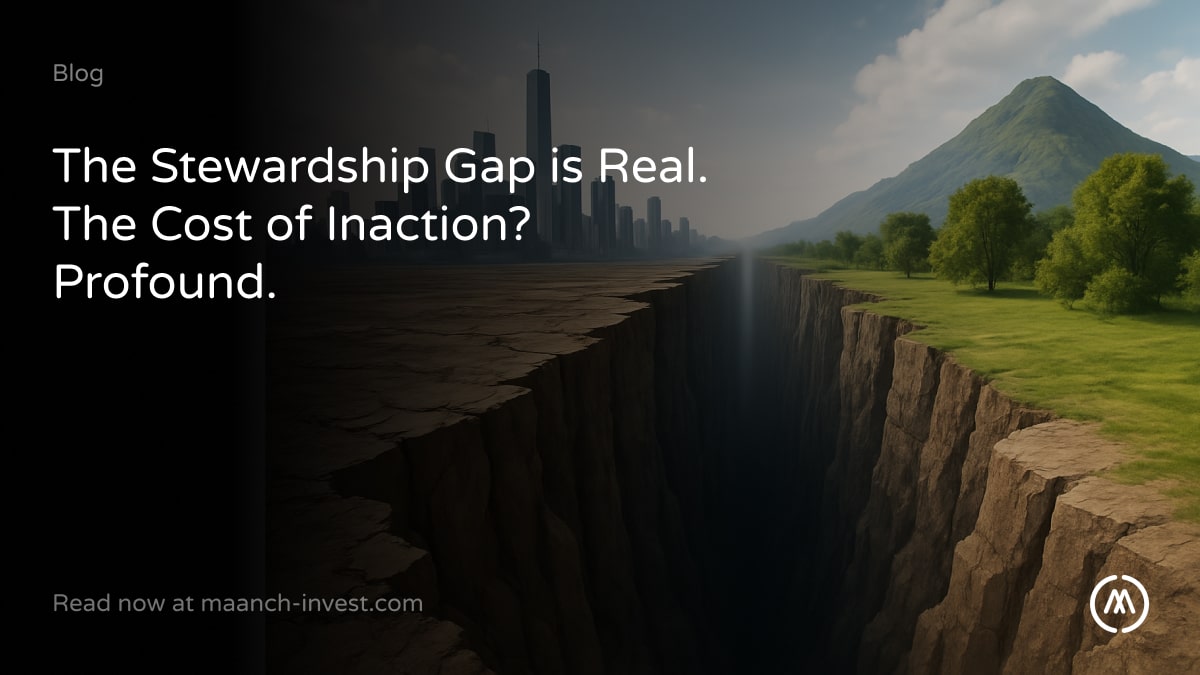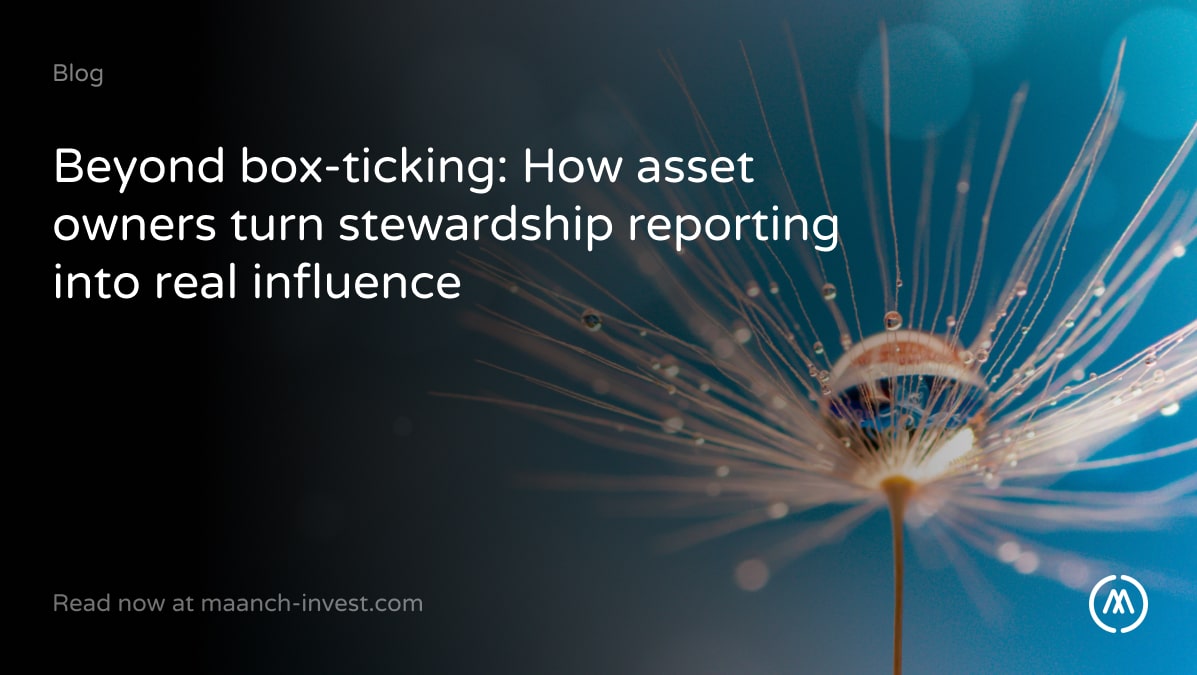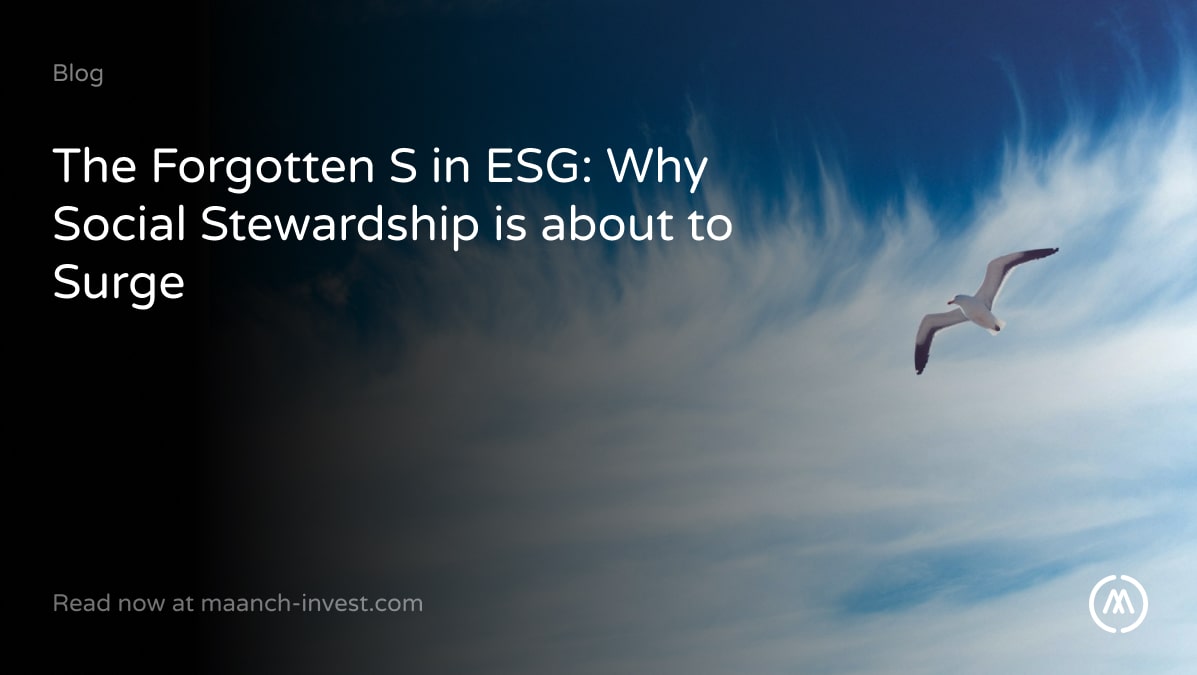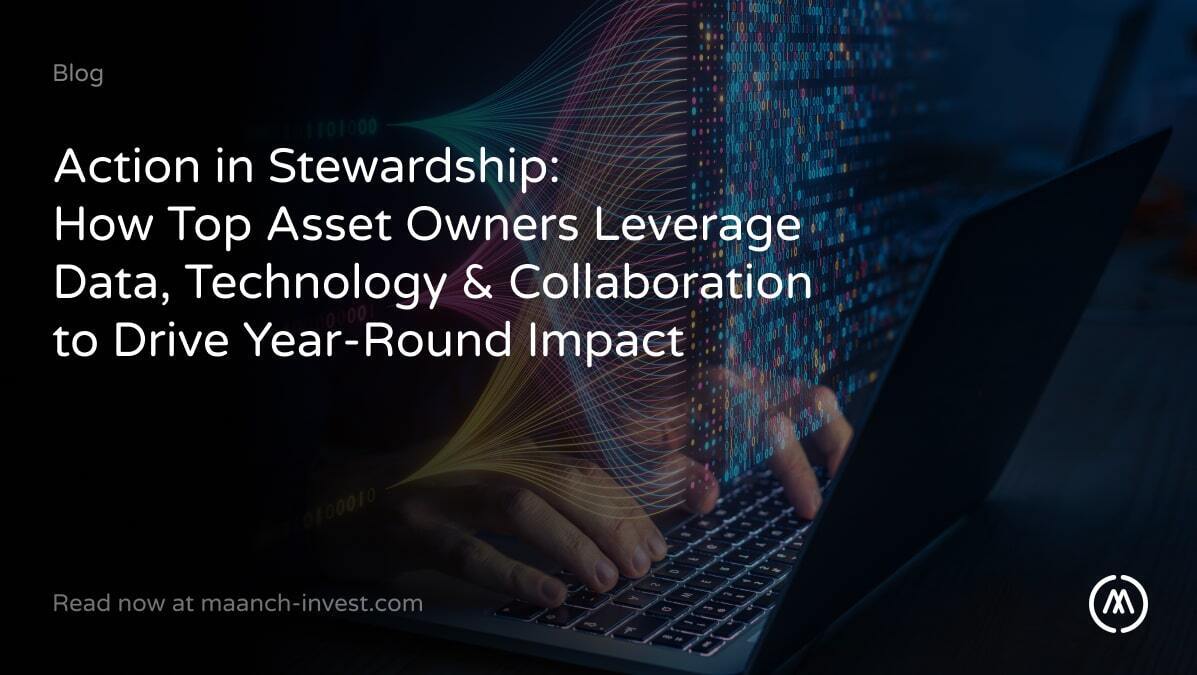As global crises mount and stewardship requirements evolve, one truth is becoming impossible to ignore. We’re facing a stewardship gap, between what most institutional investors are delivering and what’s needed.
This is a focus of our upcoming webinar with ShareAction on 23 July.
We will be discussing why many stewardship and engagement efforts fall short. And how both regulatory frameworks and real-world practice can evolve to deliver tangible, lasting impact.
We will discuss the implications and expectations of SDR disclosures. We’ll also do a deep-dive on their recent Point of No Returns 2025 – benchmark of asset managers report.
In this article, we begin to unpack the data, and what asset owners can do next.
What the Report Reveals
ShareAction’s Point of No Returns benchmark is one of the most comprehensive evaluations of how stewardship is actually being implemented. It assesses 76 of the world’s largest asset managers (US$70 trillion in AUM), against 20 outcome-based stewardship standards spanning: climate, biodiversity, human rights and governance.
The verdict? Progress is stalling:
- 87% of managers failed to meet even half of the standards;
- Many leaders from previous years have not advanced further;
- There’s little new ambition. Over half of those surveyed failed to achieve a single key standard for biodiversity.
Fewer than half of the managers surveyed:
- Have any policy restricting coal mining or coal-fired power generation across most of their funds.
- Prohibit investment in landmines, cluster munitions, chemical weapons, and biological weapons across most of their funds. This drops to less than a third if nuclear weapons are included.
In fact, ShareAction concludes that momentum is not only stalling, but it may be reversing.
A small group of, mostly European, managers continues to outperform. Top scorers include:
- Robeco (76%) – scored highest overall;
- APG (75%) – strong performance across ESG themes;
- AXA IM, Nordea, Aviva, SEB, Allianz – B ratings, with leadership in specific areas.
The world’s largest managers, including BlackRock, Vanguard, Fidelity, and State Street, who collectively manage over US$23 trillion, scored E or F. They are meeting only a few or none of the 20 standards. Their influence is immense, their stewardship underperformance a systemic issue.
Where Are the Gaps?
The report identifies five critical breakdowns in how stewardship is being exercised:
1. Voting Doesn’t Match Rhetoric
Despite bold ESG statements, voting support for environmental and social resolutions remains alarmingly low. In 2024, the median support rate dropped to just 1.4% among the largest US firms, down from 21% in 2021!
2. Human Rights: Still Marginal
Only 16 of 76 firms have adequate human rights due diligence aligned with the UN Guiding Principles. Engagement on social issues remains reactive and siloed.
3. Biodiversity: Widely Overlooked
Over half of all managers scored zero on biodiversity. Sector-specific policies for mining, fisheries or agriculture are almost entirely absent.
4. Escalation is Rarely Used
Less than 25% of managers had robust escalation strategies, and most don’t disclose how engagements affect voting or investment decisions.
5. Policies Apply Narrowly
A recurring issue is that sustainability policies are often limited to ESG-labelled funds, not applied across all assets under management.
What This Means for Asset Owners
The report makes one thing clear: the stewardship chain breaks down unless asset owners hold their managers accountable. It’s not enough to set ESG expectations, they must be monitored, measured, and enforced.
If you’re an asset owner, questions to ask include:
- Where does my manager fall in this benchmark?
- Are its ESG commitments applied across all portfolios, or just labelled funds?
- Do they escalate engagements, or merely log them?
- How often are they supporting bold shareholder resolutions?
Without transparent answers and demonstrable action, asset owners risk misalignment with their values, and their fiduciary duty.
Closing the Gap
As ShareAction notes, “Disclosures are improving, but action is still missing.” A digital tool which makes real oversight possible, we built the Engagement Tracker, to catalyse both:
- Tracking, benchmarking and reporting engagement activity by managers or in-house;
- Integrating data, e.g. from Sustainalytics, surfacing controversies and vote outcomes;
- Comparing internal activity vs external standards, e.g. ShareAction’s 20 benchmarks;
- Flagging escalation triggers, documenting outcomes and driving proactive stewardship governance.
Join our webinar to hear directly from the report authors; get practical recommendations on embedding stewardship oversight; and learn how tech is enabling asset owners to lead, not follow:
Maanch and ShareAction Webinar
The Stewardship Gap: What’s Missing and How to Fix It
Weds, 23 July
13:00–14:00 BST
Online | Free registration
Register here: https://maanch.typeform.com/webinar?typeform-source=www.linkedin.com
2020-2023 gave us the language of sustainability. Now, 2025 demands proof of delivery. Asset owners have a right to demand better and a responsibility to do so. Where trillions are managed, the cost of inaction is profound.
Let’s not reach the point of no return.



